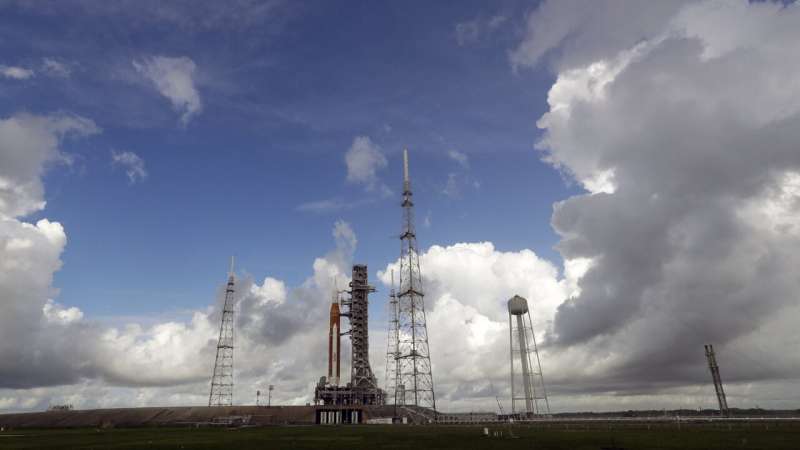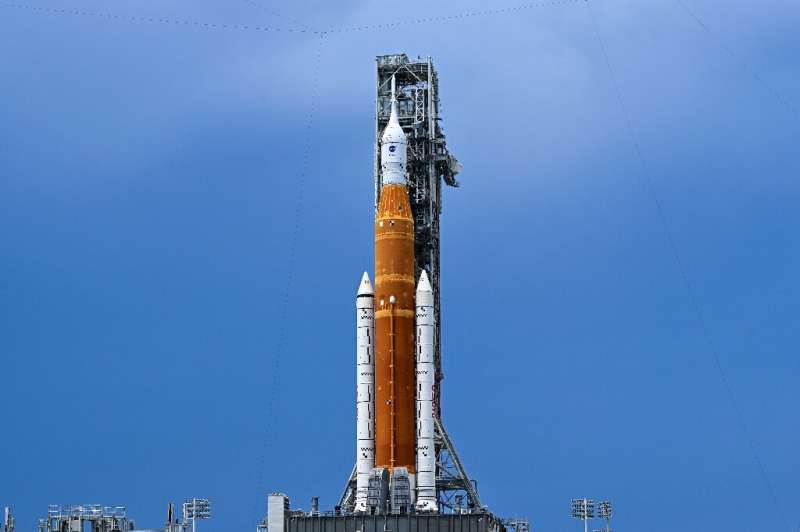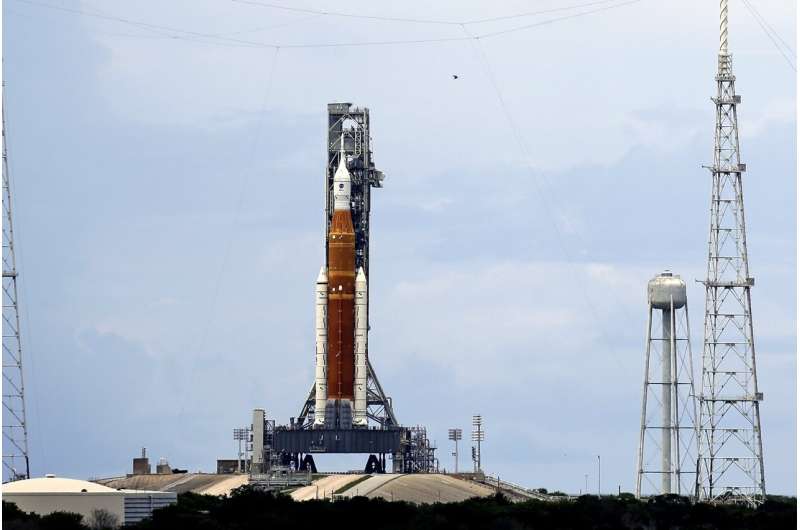
Copernical Team
AFRL's oscillating heat pipes are even cooler in space
 The Air Force Research Laboratory, or AFRL, has released the results from its Advanced Structurally Embedded Thermal Spreader Two, or ASETS-II. The AFRL experiment was 100% effective in testing the most recent version of the revolutionary Oscillating Heat Pipes, or OHPs, and the results of the more than 6,600 hours of on-orbit testing are being made available to the public.
"We now have a
The Air Force Research Laboratory, or AFRL, has released the results from its Advanced Structurally Embedded Thermal Spreader Two, or ASETS-II. The AFRL experiment was 100% effective in testing the most recent version of the revolutionary Oscillating Heat Pipes, or OHPs, and the results of the more than 6,600 hours of on-orbit testing are being made available to the public.
"We now have a Engine issue forces NASA to scrub launch of giant Moon rocket
 NASA called off a test flight on Monday of its largest-ever rocket in a setback to the ambitious program to send humans back to the Moon and eventually to Mars.
"We don't launch until it's right," NASA administrator Bill Nelson said after an engine temperature issue forced liftoff from Kennedy Space Center to be scrubbed.
"This is a very complicated machine," Nelson said. "You don't want
NASA called off a test flight on Monday of its largest-ever rocket in a setback to the ambitious program to send humans back to the Moon and eventually to Mars.
"We don't launch until it's right," NASA administrator Bill Nelson said after an engine temperature issue forced liftoff from Kennedy Space Center to be scrubbed.
"This is a very complicated machine," Nelson said. "You don't want Fuel leak interrupts launch countdown of NASA moon rocket (Update)

NASA began fueling its new moon rocket early Monday for liftoff on a test flight to put a crew capsule into lunar orbit for the first time in 50 years.
Thunderstorms delayed the fueling operation by an hour. The threat of lightning diminished enough to allow the launch team to proceed with loading the rocket's tanks.
NASA fuels moon rocket for liftoff on 1st test flight

NASA began fueling its new moon rocket early Monday for liftoff on a test flight to put a crew capsule into lunar orbit for the first time in 50 years.
Thunderstorms delayed the fueling operation by an hour. The threat of lightning diminished enough to allow the launch team to proceed with loading the rocket's tanks.
NASA shoots for the Moon, on its way to Mars

NASA's most powerful rocket yet is set to blast off Monday on the maiden voyage of a mission to take humans back to the Moon, and eventually to Mars.
Fifty years after the last Apollo mission, the space program called Artemis is to get under way with the blast off of the uncrewed 322-foot (98-meter) Space Launch System (SLS) rocket at 8:33 am (1233 GMT) from the Kennedy Space Center in Florida.
Webb inspects the heart of the Phantom Galaxy

New images of the spectacular Phantom Galaxy, M74, showcase the power of space observatories working together in multiple wavelengths. In this case, data from the NASA/ESA/CSA James Webb Space Telescope and the NASA/ESA Hubble Space Telescope compliment each other to provide a comprehensive view of the galaxy.
NASA moon rocket on track for launch despite lightning hits

NASA's new moon rocket remained on track to blast off on a crucial test flight Monday, despite a series of lightning strikes at the launch pad.
The 322-foot (98-meter) Space Launch System rocket is the most powerful ever built by NASA. It's poised to send an empty crew capsule into lunar orbit, a half-century after NASA's Apollo program, which landed 12 astronauts on the moon.
NASA awards contract to demonstrate trash compacting system for ISS
 NASA has awarded a contract to Sierra Nevada Corporation of Madison, Wisconsin, to develop and demonstrate a microgravity-compactible Trash Compaction and Processing System (TCPS) Phase B, for the International Space Station (ISS).
This contract provides firm-fixed-price core requirements and indefinite delivery/indefinite quantity, firm-fixed-price task orders, along with additional optio
NASA has awarded a contract to Sierra Nevada Corporation of Madison, Wisconsin, to develop and demonstrate a microgravity-compactible Trash Compaction and Processing System (TCPS) Phase B, for the International Space Station (ISS).
This contract provides firm-fixed-price core requirements and indefinite delivery/indefinite quantity, firm-fixed-price task orders, along with additional optio A decade in the making, NASA's Artemis 1 launch is first step back to the moon
 When NASA's Artemis I mission lifts off from the Kennedy Space Center in Florida on Monday, it will mark a major step forward for the space agency that will have been 12 years in the making.
The uncrewed test flight is the first for NASA's Space Launch System, which is paired with the Orion capsule, to ensure it can eventually deliver astronauts safely back to Earth.
The launch i
When NASA's Artemis I mission lifts off from the Kennedy Space Center in Florida on Monday, it will mark a major step forward for the space agency that will have been 12 years in the making.
The uncrewed test flight is the first for NASA's Space Launch System, which is paired with the Orion capsule, to ensure it can eventually deliver astronauts safely back to Earth.
The launch i Green light for the return to the Moon
 On 22 August 2022, NASA gave the green light for the first launch window of Artemis I. From a technical point of view, the signs are good for the first flight of the new SLS heavy-lift launch vehicle with the Orion spacecraft on board. The Artemis I mission is scheduled to last 42 days and - if the launch is successful on 29 August - return to Earth on 10 October. The Orion spacecraft, whose ser
On 22 August 2022, NASA gave the green light for the first launch window of Artemis I. From a technical point of view, the signs are good for the first flight of the new SLS heavy-lift launch vehicle with the Orion spacecraft on board. The Artemis I mission is scheduled to last 42 days and - if the launch is successful on 29 August - return to Earth on 10 October. The Orion spacecraft, whose ser 